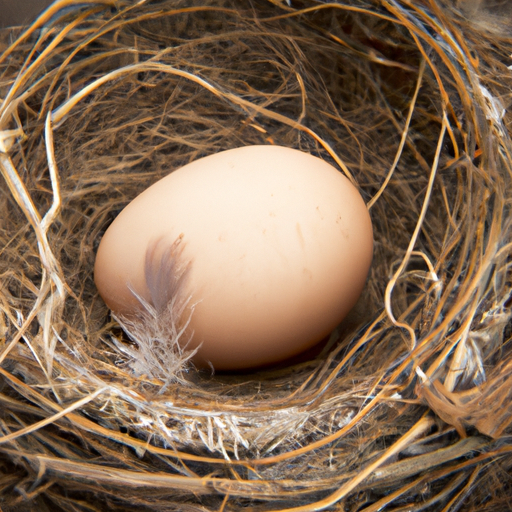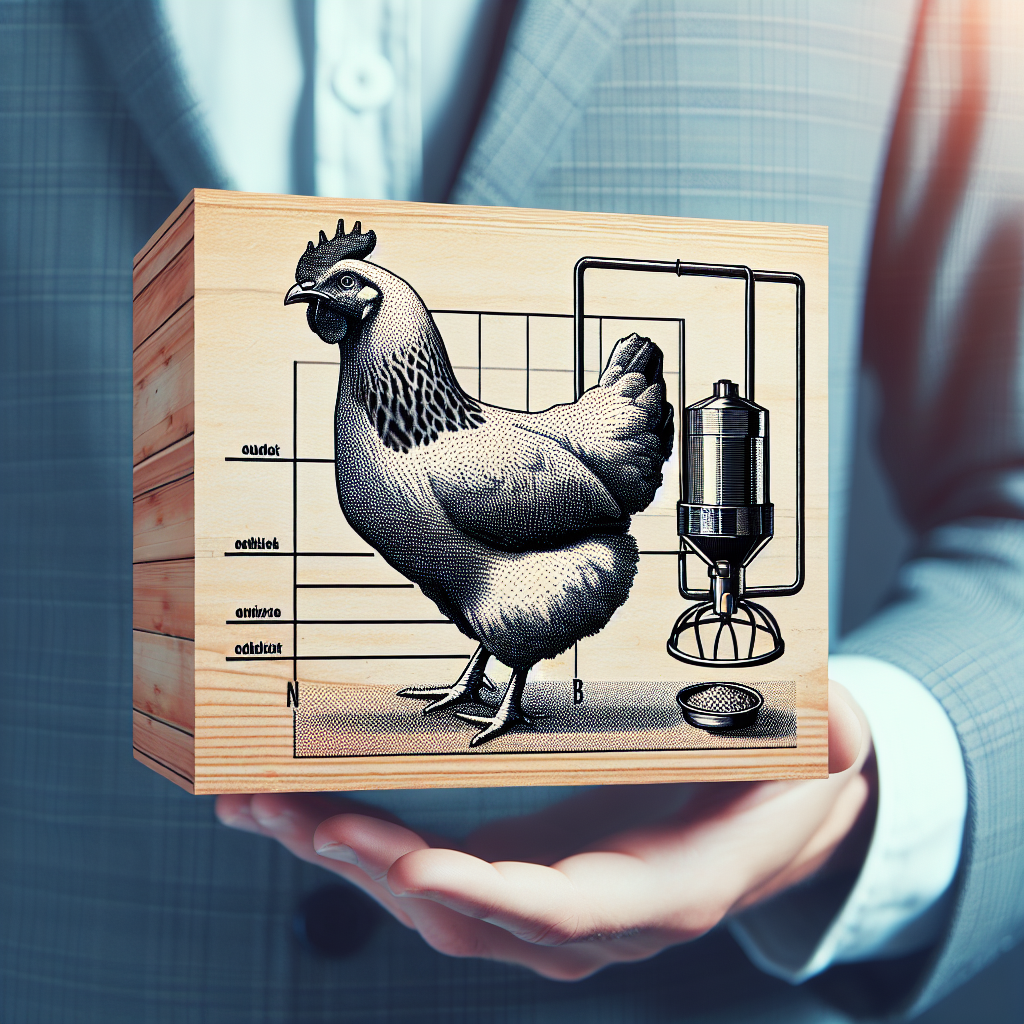In order to effectively manage egg-laying schedules and patterns within your flock, there are a few key factors to consider. By providing your chickens with a balanced diet, ensuring they have sufficient water and appropriate nesting areas, and maintaining a clean and comfortable living environment, you can encourage consistent and productive egg-laying. Understanding the natural fluctuations in egg production throughout the year and implementing strategies such as artificial lighting can also help to optimize your flock’s productivity. By following these simple yet effective tips, you can successfully manage egg-laying schedules and patterns within your flock, ensuring a steady and abundant supply of fresh eggs.
Importance of Managing Egg-Laying Schedules
Improving Efficiency and Productivity
Managing egg-laying schedules is crucial for ensuring efficiency and productivity within your flock. By understanding the natural patterns and factors affecting egg-laying, you can create an ideal environment and provide appropriate nutrition to optimize egg production. Additionally, implementing strategies to address common issues and managing broody hens can help maintain consistent egg production. By managing egg-laying schedules effectively, you can maximize your flock’s productivity and overall well-being.
Monitoring Health and Well-being
Monitoring egg-laying patterns is not only important for productivity but also for the health and well-being of your flock. Inconsistent or decreased egg production can be a sign of underlying health issues or stress. By keeping track of egg-laying schedules, you can identify any changes in patterns and address potential health concerns promptly. Regular monitoring of nesting boxes and egg collection allows you to detect any problems with eggshell quality or egg eating behavior, ensuring the overall health and well-being of your flock.
Understanding Natural Egg-Laying Patterns
Factors Affecting Egg-Laying
Several factors influence the egg-laying process in chickens. These include genetics, age, breed, ambient temperature, light exposure, and the availability of nesting areas. It is essential to consider these factors to understand and manage egg-laying schedules effectively. By accounting for these variables, you can create an environment that supports the natural instincts and physiological needs of your hens, leading to optimal egg production.
Egg-Laying Seasonality
Egg-laying seasonality refers to the variation in egg production throughout the year. In general, hens tend to lay more eggs during longer daylight periods, typically during spring and summer. However, some breeds may exhibit more consistent egg-laying patterns throughout the year, while others may experience a decline in production during colder months. Understanding the seasonal variations in egg-laying can help you anticipate changes in productivity and make necessary adjustments to optimize your flock’s performance.
Age and Breed Considerations
The age of hens plays a significant role in egg-laying schedules. Young hens typically start laying eggs around five to six months of age and reach peak production within the first year. As hens age, their egg production may decline gradually. Additionally, different chicken breeds have varying egg-laying capabilities. Some breeds are known for their high egg production, while others focus more on meat production. Considering the age and breed of your flock allows you to manage expectations and tailor your management practices accordingly.
Creating an Ideal Environment for Egg-Laying
Maintaining Optimal Lighting Conditions
Proper lighting conditions are crucial for maintaining regular egg-laying schedules. Hens require a daily exposure to approximately 14-16 hours of light to stimulate egg production. By ensuring consistent and adequate lighting, either natural or artificial, you can support the hormonal balance necessary for optimal egg-laying. Installing timers or providing supplemental lighting in the coop can help regulate light exposure and maintain consistent egg production even during shorter daylight periods.
Providing Adequate Nesting Areas
Providing sufficient and comfortable nesting areas is essential for encouraging hens to lay eggs in designated places. Nesting boxes should be clean, well-ventilated, and filled with soft bedding material such as straw or wood shavings. Each nesting box should be spacious enough to accommodate a hen comfortably and offer a sense of privacy. By providing appropriate nesting areas, you can ensure that hens feel secure and encouraged to lay their eggs in the designated spaces, making it easier for you to collect and monitor the eggs.
Ensuring Comfortable Temperature Levels
Temperature plays a significant role in egg-laying patterns as extreme heat or cold can negatively impact productivity. Hens require a comfortable environment with temperatures ranging between 50-80°F (10-27°C) for optimal egg production. During hotter months, adequate ventilation and shading in the coop can help regulate temperatures and prevent heat stress. In colder climates, insulating the coop and providing supplemental heat, if necessary, ensures that hens remain comfortable and continue laying eggs consistently.
Diet and Nutrition for Optimal Egg Production
Balanced Nutritional Requirements
Proper nutrition is essential for maintaining optimal egg production. Hens require a balanced diet consisting of high-quality, commercially formulated poultry feed. The feed should contain the right balance of protein, carbohydrates, fats, vitamins, and minerals to support egg production and overall health. Hens should have unrestricted access to feed throughout the day, allowing them to consume the necessary nutrients to sustain egg-laying. Consult a poultry nutritionist or veterinarian to ensure that you are providing the appropriate feed for your flock’s specific needs.
Calcium Supplementation
Calcium is a critical nutrient for the formation of strong and healthy eggshells. Hens may require additional calcium supplementation, especially during periods of high egg production. Crushed oyster shells or commercially available calcium supplements can be provided in a separate feeder to ensure easy access for hens. Proper calcium supplementation helps prevent issues like thin or soft-shelled eggs and ensures the longevity of egg-laying capabilities.
Water Quality and Availability
Access to clean and fresh water is vital for maintaining optimal egg production. Hens require an adequate supply of water to stay hydrated and support egg formation. Regularly check the water quality, ensuring that it is free from contaminants and replenish the water containers daily. Additionally, during hotter months, consider providing shaded areas or even misting systems to prevent dehydration and maintain egg-laying schedules.
Record-keeping and Egg Collection
Implementing a Record-keeping System
Implementing a record-keeping system is crucial for managing egg-laying schedules and monitoring flock performance. Keep track of daily egg production, noting any changes or abnormalities. This will allow you to identify trends, track the impact of management practices, and detect potential health issues. Maintaining records also helps you keep an accurate count of egg production and evaluate the effectiveness of any interventions or adjustments made.
Regular Monitoring of Nesting Boxes
Regular monitoring of nesting boxes is essential for ensuring that hens lay their eggs in the designated areas. Check the nesting boxes daily, removing any debris or soiled bedding. This practice not only maintains cleanliness but also prevents potential health hazards and encourages hens to continue using the nesting boxes. By monitoring nesting boxes regularly, you can identify any issues with eggshell quality, address any signs of egg-eating behavior, and ensure a smooth egg collection process.
Proper Handling and Storage of Eggs
Proper handling and storage of eggs are critical to maintain their quality and prolong shelf life. Collect eggs at least once a day, preferably in the morning, to ensure freshness. Handle eggs gently, avoiding any rough movements that can cause cracks or damage to the shells. It is advisable to clean dirty eggs using a dry cloth or fine-grit sandpaper, as excessive washing can remove the natural protective coating. Store eggs in a cool place with consistent temperatures, preferably below 45°F (7°C), to maintain their freshness and quality.
Addressing Common Issues with Egg-Laying
Egg Eating by Hens
Egg eating behavior can be problematic and detrimental to egg production. To address this issue, it is essential to identify the culprits responsible for the behavior. Isolate suspect hens and observe their behavior closely. Provide deterrents, such as fake eggs or golf balls, in the nesting boxes to discourage pecking or eating eggs. Ensure that hens have access to a nutritionally balanced diet to minimize any nutrient deficiencies that may contribute to this behavior. Promptly addressing this issue helps maintain a positive egg-laying environment and prevents potential egg loss.
Egg Binding
Egg binding occurs when a hen is unable to lay an egg, typically due to an egg being too large or other reproductive issues. It is a potentially life-threatening condition that requires immediate attention. Signs of egg binding include lethargy, abdominal straining, and a prolonged period of nesting without producing an egg. Consult a veterinarian immediately if you suspect egg binding. Providing a warm bath for the hen can help relax the muscles and facilitate the passage of the egg. Early detection and prompt intervention are crucial to ensure the hen’s well-being and prevent complications.
Eggshell Quality Problems
Issues with eggshell quality, such as thin or soft shells, can be indicative of nutrient deficiencies or underlying health issues. Ensure that hens receive a nutritionally balanced diet with adequate calcium supplementation to support the formation of strong eggshells. Adding crushed oyster shells or commercially available calcium supplements to their feed can help address any deficiencies. If eggshell quality problems persist, consult with a veterinarian to rule out any health issues that may be impacting egg production.
Broody Hens and Their Impact on Egg Production
Identifying Broody Behavior
Broody hens exhibit distinct behaviors associated with their desire to hatch eggs. Signs of broody behavior include persistent nesting, aggression when approached, puffed-up feathers, and refusal to leave the nesting box. Identifying broody behavior is essential as it can significantly impact egg production within the flock. Broody hens may stop laying eggs altogether or reduce their production during the duration of their broodiness.
Managing Broody Hens
Managing broody hens depends on your flock’s breeding goals and your individual preferences. If you have no intention of hatching eggs, it is best to break the broody cycle. This can be done by gently removing the broody hen from the nesting box and discouraging her from returning. Utilizing a wire bottom nesting box or placing cool objects in the nesting box can help discourage broodiness. However, if you aim to hatch eggs, provide the broody hen with a separate nesting area and fertile eggs to incubate. Proper management and understanding of broody behavior allow you to maintain control over your flock’s egg-laying schedules and overall production.
Implications on Flock Egg Production
The presence of broody hens can impact the overall egg production of your flock. The time spent by broody hens incubating eggs reduces the time available for other hens to lay eggs. This leads to a temporary decrease in productivity. However, strategic management of broody hens can ensure that their behavior does not significantly affect flock egg production. By identifying and properly managing broody hens, you can maintain a balance between egg hatching and egg-laying within your flock.
Implementing Strategies for Consistent Egg Production
Selective Breeding for Strong Egg Layers
Implementing selective breeding practices can help improve the egg-laying capabilities of your flock. Select hens with strong egg-laying genetics as breeding stock. Observe characteristics like high egg production, consistent patterns, and good eggshell quality when choosing individuals for breeding. Over time, selective breeding improves the overall egg-laying capabilities of your flock, leading to consistent and improved egg production.
Regular Rotation of Nesting Boxes
Regular rotation of nesting boxes helps prevent preference for specific boxes and ensures that all hens have equal access to comfortable and clean nesting areas. Rearranging nesting boxes every few months or after broody hens have finished incubating their eggs prevents overcrowding and potential conflicts. The rotation also helps maintain cleanliness and hygiene in the nesting areas, reducing the risk of health issues that could impact egg production.
Optimizing Flock Health and Well-being
Maintaining the health and well-being of your flock is crucial for consistent egg production. Implement good biosecurity practices to prevent the spread of diseases and parasites. Provide regular veterinary check-ups and vaccinations as necessary. Keep the coop clean and well-ventilated to minimize stress and promote a healthy environment. A stress-free and healthy flock is more likely to exhibit regular and consistent egg-laying patterns, ensuring optimal productivity for your flock.
Introducing New Birds to the Flock
Quarantine Procedures
Before introducing new birds to the existing flock, it is crucial to quarantine them to prevent the spread of diseases and parasites. Isolate the new birds in a separate, clean, and well-ventilated area for at least two weeks. During this time, observe them closely for any signs of illness. This quarantine period allows you to identify and address any health issues before introducing the new birds to the rest of the flock, safeguarding their health and overall egg-laying productivity.
Integration Techniques
Proper integration techniques help minimize stress and potential conflicts when introducing new birds to an existing flock. Gradually introduce the new birds to the flock by using methods like supervised free-ranging or creating visual barriers to reduce aggressive encounters. Ensure there are adequate resources, such as feeders and watering stations, to prevent competition and promote a smooth integration process. Slow and gradual introductions give both the existing and new birds time to adjust, minimizing disruptions to egg-laying schedules.
Effects on Egg-Laying Schedules
Introducing new birds to the flock can temporarily affect the egg-laying schedules of both the new and existing hens. The stress associated with integration and the establishment of a new pecking order can disrupt egg production. New hens may take some time to acclimate to their new surroundings, leading to a temporary decrease in egg production. Similarly, existing hens may take time to adjust to the presence of newcomers, potentially affecting their egg-laying patterns. By allowing for gradual integration and providing a supportive environment, you can minimize disruptions and ensure a smooth transition for the entire flock.
Strategies for Dealing with Non-Laying Hens
Determining the Cause of Non-Laying
Non-laying hens can be the result of various factors and require careful evaluation to determine the cause. Potential causes include poor nutrition, health issues, stress, or age-related decline in egg production. Observe the non-layers closely to identify any signs of illness or behavioral abnormalities. If nutrition-related deficiencies are suspected, consult with a poultry nutritionist to adjust the diet accordingly. Consulting with a veterinarian can help identify any underlying health issues that may be affecting egg production.
Supportive Care for Non-Layers
Providing supportive care for non-laying hens is crucial to promote overall well-being and potentially encourage egg production. Ensure non-layers have access to a balanced diet, appropriate housing, and a stress-free environment. Implement strategies to minimize stressors, such as aggressive behavior or overcrowding, that can negatively impact egg production. Offering nutritional supplements or treats that promote overall health, such as mealworms or fresh greens, can also support non-layers and potentially stimulate egg production.
Deciding on Culling or Rehoming
If non-laying hens do not respond to supportive care and interventions, it may be necessary to consider culling or rehoming them. However, before making this decision, carefully evaluate the individual circumstances and consider factors such as the hens’ age, breed, overall health, and your own personal goals. Non-laying hens can still contribute to the flock in other ways, such as providing pest control or serving as companion animals. Weigh the options and make a well-informed decision that is best for the welfare of the non-laying hens and your overall flock goals.
In conclusion, managing egg-laying schedules is vital for improving efficiency, productivity, and the overall health and well-being of your flock. Understanding the natural egg-laying patterns, creating an ideal environment, providing proper nutrition, implementing record-keeping practices, addressing common issues, and strategically managing broody hens are all crucial aspects of effective egg-laying management. By implementing these strategies, introducing new birds strategically, and addressing non-laying hens appropriately, you can optimize egg production, maintain flock health, and ensure a successful and thriving poultry operation.




